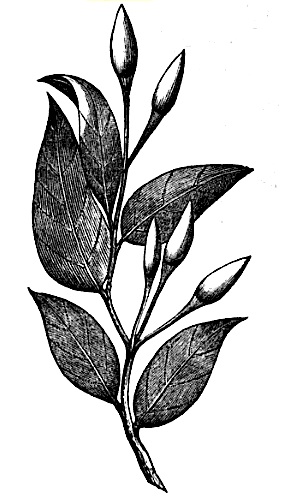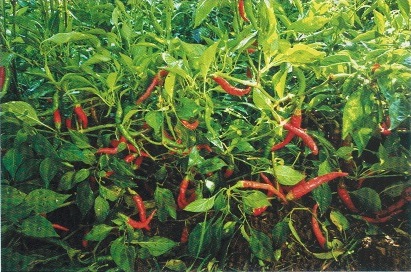Editor’s Note: I found this interesting chile food history article while doing numerous complicated word searches in Google Books, a treasure trove of buried culinary information going back hundreds of years. I have provided the historical illustrations. –Dave DeWitt
“The Virtues of Pepper, 1861”
Article in The Floral World and Garden Guide, Volume 4. London: Groombridge and Sons, 1861.
Cayenne pepper, made from the ripe pods of the Capsicum annuum, or Guinea pepper, enters largely (often unsuspected) into the soups, hashes, stews, meat-pies, and gravies that appear on English dinner-tables; but its medicinal uses, in this country, are nearly confined to furnishing a gargle, which is found to be very efficacious in strengthening and restoring the voice when weakened or lost by a relaxed sore throat.
In the tropical countries from whence we procure capsicums, and where their cultivation is of the easiest kind, they are both abundantly used as an article of diet, and are employed as tonics and stimulants, externally as well as internally. Equatorial cookery is almost saturated with various peppers. Not the natives only, but European residents, find them beneficial, and even carry prejudice so far as to regard their favourite spices as cooling. Fermented liquors are prepared from them. Several sauces and pickles, consisting mainly of capsicum, exist, which are scarcely known except to persons who have dwelt in, or who have close correspondence with, hot countries.
A tropical labourer will eat a capsicum pod with his bread or his rice, just as in the south of Europe, a working man will make a meal of raw onions and garlic and bread; in the north of France, of bread and salad; in Germany, of bread and raw bacon or ham; in England, of bread and cheese, or, in maritime towns, of bread and cured fish, uncooked. A street preserve is made with ripe capsicums; gathered green, they are pickled in vinegar, like capers or gherkins. The latter preparation is in some esteem with us; but we are altogether ignorant of the very strong broths or decoctions, made from capsicum, which the natives of the Indian Archipelago drink with pleasure to themselves, although a European would believe himself poisoned if he were to swallow a single spoonful. In the Portuguese settlements, these stomachic potions are called “hot pepper drink.”
The Indian mode of preparing capsicum pods, as a seasoning for table use, is to dry them slowly, first in the shade, and afterwards mixed with flour in a vessel, by the aid of fire. They then cut them with scissors into very small shreds, and to every ounce of shredded pods they add a pound of the finest flour, and knead them with leaven into a dough or paste. When the lump is well fermented and risen, it is put into the oven ; when baked, it is cut into slices, and baked again, like biscuits; lastly, it is reduced to a fine powder, which is passed through a sieve. This powder, according to Oriental belief, is an admirable condiment; it excites appetite, helps digestion, and prevents the constitution from stagnating and languishing. The Mexicans make a small species of long-pepper, or chili pepper, enter into the composition of their cakes and pastes of chocolate.









